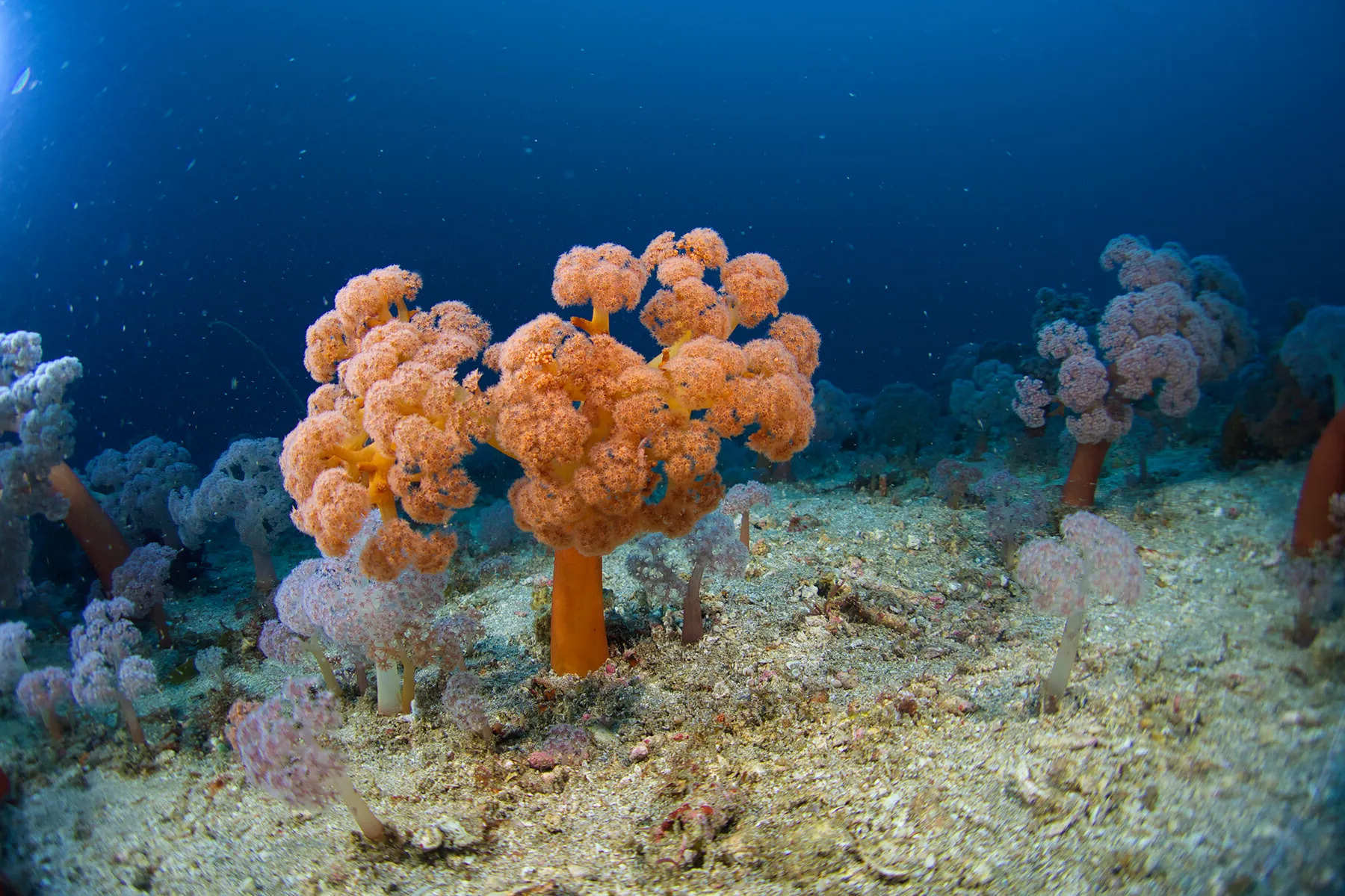
Ever wondered what mysteries lurk in the depths of the ocean, specifically in the enigmatic twilight zone? This shadowy realm, lying between 200 and 1,000 meters below the surface, is home to some of the most fascinating and least understood creatures on our planet. Twilight zone ocean facts reveal a world where sunlight barely penetrates, yet life thrives in abundance. From bioluminescent jellyfish to mysterious, unseen species, this part of the ocean is a testament to nature's adaptability and creativity. Ready to dive deep into the unknown? Let's plunge into the depths and uncover 20 great facts about the ocean's twilight zone, where every discovery feels like stepping into another dimension.
Key Takeaways:
- The twilight zone of the ocean, a mysterious realm between 200 and 1,000 meters deep, is home to unique creatures and plays a crucial role in regulating Earth's climate.
- Exploring and protecting the twilight zone is essential for understanding its potential for breakthroughs in medicine, materials science, and climate change solutions.
What is the Twilight Zone of the Ocean?
Deep beneath the ocean's surface lies a mysterious world, known as the twilight zone. This area, extending from 200 to 1,000 meters below the surface, is where sunlight begins to fade into darkness. It's a realm of perpetual dusk, home to some of the most unusual and least understood creatures on Earth.
- Sunlight barely penetrates this depth, making photosynthesis nearly impossible. As a result, life in the twilight zone has evolved in fascinating ways to survive.
Unique Creatures of the Twilight Zone
The twilight zone's inhabitants are as varied as they are fascinating. Adaptations to the low light and high pressure environment have resulted in some truly unique life forms.
-
Many animals here are bioluminescent, producing their own light through chemical reactions to communicate, attract prey, or deter predators.
-
Giant squids thrive in this zone, with some believed to be up to 43 feet long. Their enormous eyes are specially adapted to detect faint traces of light.
The Role of the Twilight Zone in Ocean Ecology
This zone plays a critical role in the ocean's ecological balance. It acts as a buffer between the shallower waters above and the abyss below.
-
It's a key site for the "biological pump" process, where carbon from the surface is transported to deeper waters, helping to regulate Earth's climate.
-
Deep-sea migrations, known as diel vertical migrations, occur when creatures move to the surface at night to feed and return to the depths by day. This is the largest animal migration on Earth, in terms of biomass.
Exploration and Research Challenges
Exploring the twilight zone presents significant challenges due to its depth and the darkness.
-
Advanced technology, like remotely operated vehicles (ROVs) and autonomous underwater vehicles (AUVs), is required to study this zone.
-
Despite technological advances, much of the twilight zone remains unexplored. Scientists estimate we've only seen a fraction of the species living in this mysterious world.
Conservation Efforts
The twilight zone's unique ecosystem is under threat from human activities, including deep-sea fishing and mining.
-
International efforts are underway to protect this critical part of the ocean. Proposals include establishing marine protected areas (MPAs) that encompass regions of the twilight zone.
-
Noise pollution from ships and underwater construction can disrupt the lives of twilight zone creatures, leading to increased stress and changes in behavior.
The Twilight Zone's Influence on Culture
Beyond its ecological significance, the twilight zone has captured the imagination of many, inspiring art, literature, and film.
-
Its mysterious nature has made it a popular setting for science fiction stories, where its unexplored depths are often portrayed as home to ancient or alien life forms.
-
The term "twilight zone" itself has become synonymous with the strange and unexplained, largely thanks to the iconic 1959 television series of the same name.
Future Research Directions
As technology advances, so too does our ability to explore and understand the twilight zone.
-
Future research aims to map the twilight zone more completely, identifying new species and understanding their roles in the ocean's ecosystems.
-
Scientists are also studying how climate change impacts this zone, including changes in water temperature and chemistry.
-
Genetic research is unlocking the secrets of twilight zone species, offering insights into how life can adapt to extreme conditions.
The Importance of Public Awareness
Raising awareness about the twilight zone and its significance is crucial for its conservation.
-
Educational programs and documentaries can help people understand the importance of this mysterious part of the ocean.
-
Public support for conservation initiatives is vital for the implementation of protective measures and research funding.
-
Engaging with the twilight zone through virtual reality and other immersive technologies can bring its wonders to a wider audience, fostering a deeper connection with our planet's hidden depths.
The Twilight Zone's Untapped Potential
Research in the twilight zone could lead to breakthroughs in medicine, materials science, and more.
-
Compounds from twilight zone organisms have potential applications in pharmaceuticals, including antibiotics and cancer treatments.
-
The unique adaptations of twilight zone creatures could inspire innovations in engineering and design, mimicking their efficiency in energy use and materials.
-
Understanding the twilight zone's ecosystems can also improve our models of Earth's climate system, offering new strategies for combating climate change.
A Final Dip into Twilight Zone Mysteries
Diving into the twilight zone of the ocean reveals a world teeming with secrets and surprises. This mysterious layer, far below the sunlit surface, is home to some of the most fascinating creatures and phenomena on our planet. From bioluminescent organisms that light up the dark waters to unique ecosystems thriving in extreme conditions, the twilight zone challenges our understanding of life and its adaptability. It's a reminder of how much remains undiscovered beneath the waves, urging scientists and ocean enthusiasts to keep exploring. As we've journeyed through these 20 great facts, it's clear that the ocean's twilight zone is not just a place of darkness, but a beacon of biological diversity and scientific wonder. Let's keep our curiosity alive and continue to uncover the mysteries of the deep.
Frequently Asked Questions
Was this page helpful?
Our commitment to delivering trustworthy and engaging content is at the heart of what we do. Each fact on our site is contributed by real users like you, bringing a wealth of diverse insights and information. To ensure the highest standards of accuracy and reliability, our dedicated editors meticulously review each submission. This process guarantees that the facts we share are not only fascinating but also credible. Trust in our commitment to quality and authenticity as you explore and learn with us.


